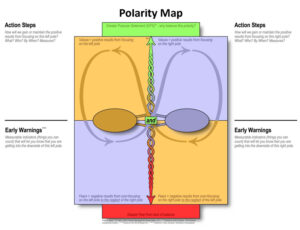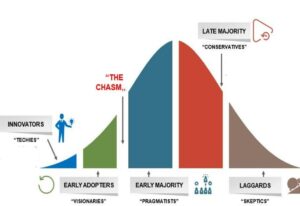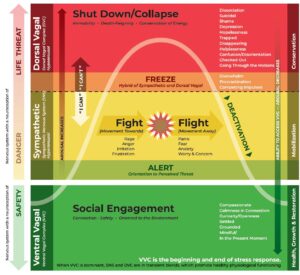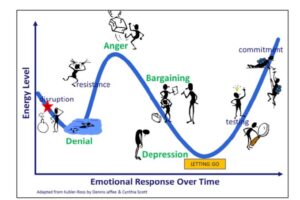Progress report for WPDP23-015
Project Information
Through a lens of soil health, Skills and Tools for Complex Adaptive Thinking to Equip Leaders in Change Initiatives will expand agricultural professionals’ skillsets in being trusted coaches and resources for farmers and ranchers. These skills are invaluable in the analysis and discernment of scientific information, practices and cultural knowledge—as well as supporting producers’ innate wisdom and ingenuity—to weave through complex issues and conversations, partner with producers in context-based solutions and reveal creative paths forward in polarizing situations. Mark Shrock, a Kansas-based no-till farmer since 1998, describes his journey to creating a soil-centric farm as “more of a thought process in problem-solving than knowing the right answer right now....thinking about biological systems and plants, sun, water and nutrition”1. Often, the best-intentioned farmer or rancher adopts new technology or quick fixes that carry hidden consequences to the farm system, diminishing profitability, soil, plant or animal health and/or social well-being.
Based on the premise that a producer’s mindset, mental models and assumptions can limit or expand their full potential and success, this project offers agricultural educators new tools and coaching frameworks to learn, self-reflect, see “wholes”, avoid unintended degenerative consequences and embrace adaptive-thinking and experimentation. This program fills a critical void in professional development for ag providers and will ultimately lead to positive change through increasing resilience, profitability and well-being in the face of rising input costs, drought, severe weather, declining soil health and mental wellness concerns.
Integrity Soils and the project team will adapt business and ecological frameworks from organizational learning, biomimicry and polarity mapping—along with new discoveries in cognitive and neuroscience on the biology of learning—to design and deliver in-person and online training curricula for at least 160 agricultural professionals throughout the West.
For this proposal, objectives and short term learning outcomes are the same. Please reference the attached Logic Model for additional detail.
|
Logic Model reference # |
Objectives |
Indicator |
Target Number |
How Measured |
|
4.1 |
Increase ag providers skills, tools, frameworks and practice to shift mindset/mental models and embrace adaptive thinking and experimentation |
# of ag providers with increased skills, tools, frameworks and practice to shift mindset and embrace adaptive thinking and experimentation |
160 |
End of course survey |
|
4.2 |
Increase ag providers knowledge of and practice with polarity management, organizational learning and biomimicry principles and frameworks |
# of ag providers with increased knowledge of and practice with polarity management, organizational learning and biomimicry principles and frameworks |
160 |
End of course survey |
|
4.3 |
Increase ag providers skills, tools, frameworks and practice with self-assessment of change programs |
# of ag providers that increase skills, tools, frameworks and practice with self-assessment of change programs |
160 |
End of course survey |
|
4.4 |
Increase ag provider understanding of cognitive psychology and neuroscience as they relate to decision-making and pathways to learning in agricultural contexts |
# of ag provider participants that increase understanding of cognitive science as it relates to decision-making and pathways to learning |
160 |
End of course survey |
|
4.5 |
Increase ag providers skills, tools and practice with frameworks that build trust with farmers and ranchers |
# of ag providers that increase skills, tools and frameworks to build trust with farmers and ranchers |
160 |
End of course survey |
|
4.6 |
Deepen ag providers’ conflict resolution skills |
# of ag provider that increase conflict resolution skills |
160 |
End of course survey |
|
YEAR |
TIMELINE |
MILESTONE |
PARTICIPANTS |
OUTPUTS |
OBJECTIVES/OUTCOMES |
|
2023 |
April-August |
Curriculum Development |
PIs, Cooperators |
The Playbook: self-assessment tool, curriculum and activities, power-points, workshop agenda |
|
|
2023 |
September |
2-Day in-person beta workshop |
PIs, Cooperators, Participants |
See Logic Model Objectives/Outcomes 4.1-4.6 |
|
|
2023 |
September |
Evaluate workshop feedback |
Evaluator, PIs, Cooperators |
Formative Evaluation Data |
Improved curriculum and activities |
|
2023 |
September-October |
Video filming |
Videographer, PIs |
Raw graphic content for online course |
|
|
2023/2024 |
October-January |
Post-production videography |
Videographer, PIs |
High-quality edited, mastered visual content |
|
|
2023/2024 |
October -January |
Market online school |
PIs, Cooperators |
Participants recruited |
|
|
2023/2024 |
December-January |
Thinkific Platform management, load curriculum/content |
Administrator, PIs |
Online course |
|
|
2024 |
January |
Introductory live webinar |
PIs, Cooperators |
Course description, participant introductions. Class hubs |
Understanding of course expectations, curriculum, methodology, platform. Q&A. |
|
2024 |
January |
Annual Report submitted |
PIs, Evaluator |
Report |
Project update |
|
2024 2025 |
January-March |
Online course #1 Marketing for online course #2 |
PIs, Participants |
Training Participant recruitment |
See Objectives 4.1-4.6 |
|
2024 |
March |
Concluding live webinar Post course evaluation |
PIs, Evaluator, Cooperators |
Course wrap up, discussion, evaluation data |
Understand course impact, feedback for course #2 |
|
2024 |
April-June |
Online Course #2 and evaluation Marketing for online course #3 |
PIs, Participants, Evaluator |
Training Participant recruitment |
See Objectives 4.1-4.7 |
|
2024 2025 |
October-December |
Online Course #3 and evaluation |
PI, co-PI, Participants, evaluator |
See Objectives 4.1-4.7. Understand course impact |
|
|
2024/2025 |
September - January |
Intermediate and end-of-program surveys and interviews |
Evaluator, Participants, PIs, |
Program evaluation data |
Assess intermediate actions and conditions: 5.1-5.6; 6.1-6.7. See Outcomes below or Logic Model. |
|
2025 |
January-March |
Data input, analysis, evaluation and reporting Final Report |
Evaluator, PI, co-PI, Cooperators |
Assembled and analyzed data Final Report |
Understanding course effectiveness, pitfalls, etc |
Cooperators
- - Producer
- (Educator)
- - Producer (Educator)
Education
Our methods call upon teachings from Socratic questioning, Constructivist, Social and Critical Epistemologies. Calling upon a diverse range of teaching methodologies, leacture-based learning, group learning, listening skills and techniques to foster better questioning.
Activities used included:
- Mindful awareness exercise
- Reflective practices and group discussions
- Self-reflection
- Case study enactments that bring a case study to life through an interactive scenario. This approach allows students to step into the shoes of key stakeholders, apply theoretical knowledge to practical situations, and engage in critical analysis and decision-making.
Experiential somatic learning
- Use movements and visualizations to integrate body, mind, and emotions
- Group discussions to reflect where their client's experiences are arising from.
Kinesthetic learning
- Drawing with colored pens
- Role-playing activities to embody teaching concepts
- Delivering a student-designed skit
Lecture-based learning
- Powerpoints, videos, whiteboard and flipcharts.
Education & Outreach Initiatives
Ag Providers increased skills, tools and frameworks to support producers in being more open to experimentation and adaptive thinking. Feedback is being incorporated to refine curriculum for online curricula.
Program PIs and partners developed and delivered a 2-day SHIFT curriculum in Denver to 36 ag providers and producers. The interactive workshop was filmed to create video content for the online course. Multiple break-out groups tackled several exercises to practice and integrate lecture material. Participants reported back to the whole group.
Curriculum topics and activities specific to this overarching objective included:
- What is Leadership?
- Natures Principles of Leadership
- Models of Learning
- Neuroscience of Change
- Listening
- Designing Programs for Transformation
- Patterns and Habits
- Ecology of Money
- Polarization Mapping
Participants were asked to rate their understanding/ability/confidence on a scale of 1 to 5, where 1= NONE and 5 = MOST. Responses were averaged for the following outcome.
| n=36 | Pre-Training | Post-Training | Increase |
| My ability/confidence to coach producers through decision-making, adaptive thinking and experimentation | 2.7 | 4.06 | 1.36 |
Ag providers increased knowledge of and practice with polarizing issues and increased knowledge of styles of learning.
PIs described Peter Schulte's polarity management theory, framework and polarity map. Polarity management focuses on recognizing and balancing two poles of an issue or situation, with the realization that neither pole is right or wrong and that there is wisdom in diverging perspectives on an issue. Common examples of pairs of polarities include: structure AND flexibility, leading AND empowering, advocating AND being curious. Participants broke into small groups and practiced polarity mapping on contentious topics.
Participants were asked to rate their understanding/ability/confidence on a scale of 1 to 5, where 1= NONE and 5 = MOST. Responses were averaged for the following outcomes. Additional, 13 out of 36 participants noted that polarity management was one of the most effective activities/topics they learned to work with producers to promote lasting change and 15 of 36 participants indicated they will put this framework into action.
| n=36 | Pre-Training | Post-Training | Increase |
| My understanding of polarity management and tools to work with producers in polarizing situations | 1.85 | 3.57 | 1.72 |
| My ability/confidence in working with producers in polarizing situations | 2.42 | 3.85 | 1.43 |
Responses from participants included:
"The polarity exercise taught me how to reposition my thinking on contentious topics and be a more effectual communicator when I may not agree wit someone on a topic."
"I learned that I rarely operate below “orange” on the poly-vagal scale. I am certain I’ll be able to help my clients deactivate in the future and even build situations geared towards de-activation."
Ag providers increased skills, tools, frameworks and practice with self-assessment and change/transformation programs.
Numerous topics and activities addressed how we work with ourselves and producers to achieve positive change in their lives and on their farms. Working with producers to recognize how patterns and states of being can limit or expand options and possibilities can have a powerful impact on coaching them into change. Ag providers will be more effective in this arena when they recognize their own ways of being.
PIs began with styles of learning and teaching and the learning spiral which describes a progression through five stages of learning. 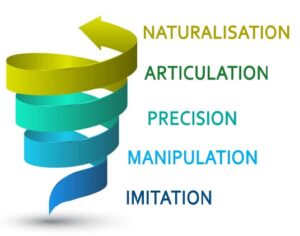
- Naturalization – skills become automatic with limited thought or exertion.
- Articulation – harmony and consistency used to combine 2 or more skills in one major skill sequence
- Precision- Reproduces a skill with accuracy and proportion. Generally an exact performance from original source.
- Manipulation –performs in accordance to instructions, rather than observation
- Imitation – see skills and tries to repeat
The Parable of the Boiled Frog was introduced to spur thought on the danger of being unaware of deteriorating conditions until it is too late. Consideration was given to how folks are charmed by new technology and quick fixes. Ultimately, learning is doing and knowledge is experience, but if we are unaware of the consequences of our actions we can not learn from direct experience.
Educational contexts/teaching styles were presented to bring light to working alongside producers to learn and observe as opposed as being an authority figure presenting information.
Designing programs for transformation (shifting how we observe, think and act) began by looking at the trajectory of change initiatives, and, in particular, how do we move past early adoption across the chasm to a majority of adopters? The importance of engaging thought leaders respected in their communities to be champions of change was emphasized.
PIs presented on how important our listening skills are, especially to quiet our own minds, observe, limit our inclination to speak too much and have a big heart to give and receive — people want to know you care before they care what you know. Participants practiced observing and listening.
Producers generally are experiential learners and approaches relying only on analytical come at the cost of empathy, self-expression, creativity, emotions and spiritual connections. Participants reflected on their ability to create trusted space for producers to share emotionally and what their automatic responses are.
One of the most well-received topics was The Rider and The Elephant, where the rational side of the brain is the rider and the elephant represents the emotional side of the brain. The rider's strength is to think and plan, the elephant's strength is emotion, without which we lack motivation/energy to get things done. Shifting behavior requires that we: 1) direct the rider, 2) motivate the elephant and 3) shape the path. PIs presented on strategies to achieve this and participants practiced working scenarios in small groups.
Participants were presented with the following set of questions to self-reflect on how they showed up as a leader.
Where did you find yourself coaching-bringing out the full self-expression for those around you.?
- When did you lead from behind and bring out others’ shining light?
- When did you feel compelled to…drive your own agenda or jump in? Give advice?
- Did you interact in a way that was familiar or business as usual?
- When did you operate from right/wrong? Or get small and dim your own light? Got confused?
- When do you interpret others stories into your own diagnostic or theoretical language?
- Where does it get hard to listen? What’s going on for YOU?
- Where do you feel/see peoples core humanity and unique essence shining through?
Participants were asked to rate their understanding/ability/confidence on a scale of 1 to 5, where 1= NONE and 5 = MOST. Responses were averaged for the following outcomes.
| n=36 | Pre-Training | Post-Training | Increase |
| My ability/confidence to assess my own state/ways of being and how to shift myself to better serve producers | 2.83 | 4.44 | 1.61 |
| My understanding of processes of learning/teaching styles and what undermines learning teaching | 2.67 | 4.27 | 1.6 |
| My listening skills | 3.36 | 4.32 | 0.96 |
| My communication skills | 3.38 | 4.26 | 0.89 |
When asked what patterns participants were able to identify to awaken their own unique capacity in leaderships, they responded:
"Understand where you are at, how experience shapes perspectives and - see how patterns, habits limit growth or understanding of key issues, especially during crisis and how to get unstuck."
"I recognize the pattern of self doubt, insecurity and “stress” of doing too much at a time. I am in the process of rewriting this narrative and at the same time, welcoming these aspects of me as gifts enabling more empathy for humans. Being a leader doesn’t mean being perfect, it just means to me being authentic and loving yourself for where you are at, which encourages others to do the same."
"How important it is for self care/mental health as an ag leader to be able to present/enact change"
"I have big ears, and naturally take to asking questions. I also have many ideas. But it is important to have the solutions come from within after the initial education and coaching piece is over."
"Hold back my opinion, become a better listener, silence is okay"
"Speak to show care, not knowledge"
"Listening to respond/rebutt and how that is not the best approach (I don’t have to have all the answers)"
"Primarily taking responsibility for my own limiting factors and becoming accountable for how I am being in the world"
Ag providers increased understanding of cognitive psychology and neuroscience as they relate to decision-making and pathways to learning in agricultural contexts.
PIs presented on how stress influences our ability to think, hear, learn, remember and act. People under stress also tend to react to perceived threats rather than reality. PIs presented the Polyvagal Theory as proposed by behavioral neuroscientist, Stephen W Porges, to provide a framework to see patterns that support or impede learning. The parasympathetic nervous system has a "ventral vagal system" which supports social engagement, and a "dorsal vagal system" which supports immobilization behaviors. Ag providers will be more successful working with producers when they recognize when stress is a limiting factor.
Participants broke into small groups to practice identifying clues and ways to gauge a producers stress level and then discussed ways to work with producers to decrease stress levels.
Participants were asked to rate their understanding/ability/confidence on a scale of 1 to 5, where 1= NONE and 5 = MOST. Responses were averaged for the following outcomes. These two outcomes had the highest rate of learning amongst all outcomes measured. Additional, 9 out of 36 participants noted that the Polyvagal Theory was one of the most effective activities/topics they learned to work with producers to promote lasting change and 11 of 36 participants indicated they will incorporate vagal state assessment and regulation into their work.
| n=36 | Pre-Training | Post-Training | Increase |
| My ability/confidence to work with producers to recognize where they are on the polyvagal spiral. | 1.81 | 4 | 2.19 |
| My understanding of the neuroscience of change as it relates to decision-making and pathways to learning and in agricultural contexts | 2.19 | 4.11 | 1.92 |
Additional comments on this objective included:
"I thought the information about the vagal system was very interesting. This will certainly have a lasting impact and I think is VERY applicable in dealing with responding to producers in crisis."
"This course offered important insights on the mental health crises that farmers and ranchers are facing and how to deal with it and gave me important solutions, advice to follow."
Ag providers increased skills, tools and practice with frameworks that build trust with farmers and ranchers and deepened their conflict resolution skills.
All of the activities described above were also designed to support ag professionals in building trust and improving conflict resolution skills. Communication and listening skills, teaching and learning styles, self-reflection, polarity mapping, empathy, pausing to reflect on your own values, acting from love and grounding rather than from fear, judgement or comparison, and focusing on small meaningful actions you can guarantee to carry through to completion with producers all contribute to building trust and de-escalating conflict.
PIs emphasized that respecting and recognizing wherever someone is at on their journey is OK is key to building trust.
Participants were asked to rate their understanding/ability/confidence on a scale of 1 to 5, where 1= NONE and 5 = MOST. Responses were averaged for the following outcomes.
| n=36 | Pre-Training | Post-Training | Increase |
| My skills, tools and frameworks to build trust with farmers and ranchers | 3.04 | 4.33 | 1.29 |
| My conflict resolution skills | 2.82 | 3.94 | 1.12 |
Additional comments included:
"Learning how to listen to people/ranchers actively to first learn where things are at - and ask them questions about there they want to be, how they can make the changes"
x
x
Educational & Outreach Activities
Participation Summary:
Learning Outcomes
Project Outcomes
The following learning outcomes were measured with a post-pre and post survey. Pre-workshop understanding and skill levels were self-assessed after the workshop, based on research indicating that students can think they know more than they know prior to an instructional event. In essence, at the beginning of the instruction, students didn’t know what they didn’t know, so gave themselves higher ratings than they did by the end of the learning experience, i.e., they rated themselves lower after the instruction (Hiebert & Magnusson, 2014).
LEARNING OUTCOMES and IMPACT
- Increase ag providers understanding of processes of learning/teaching styles and what undermines learning/teaching.
- Increase ag providers understanding of neuroscience of change as it relates to decision-making and pathways to learning in agricultural contexts
- Increase ag providers ability and confidence for self-assessment and how to shift themselves to better serve producers
- Increase ag providers ability/confidence to work with producers to recognize where they are on the polyvagle spiral
- Increase ag providers understanding of polarity management and tools to work with producers in polarizing situations
- Increase ag providers ability/confidence to coach producers through decision-making, adaptive thinking and experimentation
- Increase ag providers skills, tools and frameworks to build trust with farmers and ranchers
- Increase ag providers conflict resolution skills
- Increase ag providers communication skills
- Increase ag providers listening skills
- Skills and understanding were assessed on a scale of 1 (NO skill/understanding) to 5 (MOST skill/understanding). Survey results follow, indicating positive results in each desired learning outcome.
RESULTS and IMPACT
| Skills and understanding | self rated 1 (no skill/knowledge) to 5 (most skill/knowledge) | |||
| n=36 | Avg Before | Avg After | Avg Change | |
| My ability/confidence to work with producers to recognize where they are on the polyvagel spiral. | 1.81 | 4 | 2.19 | MOST CHANGE |
| My understanding of the neuroscience of change as it relates to decision-making and pathways to learning and in agricultural contexts | 2.19 | 4.11 | 1.92 | |
| My understanding of polarity management and tools to work with producers in polarizing situations | 1.85 | 3.57 | 1.72 | |
| My ability/confidence to assess my own state/ways of being and how to shift myself to better serve producers | 2.83 | 4.44 | 1.61 | |
| My understanding of processes of learning/teaching styles and what undermines learning teaching | 2.67 | 4.27 | 1.6 | |
| My ability/confidence in working with producers in polarizing situations | 2.42 | 3.85 | 1.43 | |
| My ability/confidence to coach producers through decision-making, adaptive thinking and experimentation | 2.7 | 4.06 | 1.36 | |
| My skills, tools and frameworks to build trust with farmers and ranchers | 3.04 | 4.33 | 1.29 | |
| My conflict resolution skills | 2.82 | 3.94 | 1.12 | |
| My listening skills | 3.36 | 4.32 | 0.96 | |
| My communication skills | 3.38 | 4.26 | 0.89 | LEAST CHANGE |
Additionally, participants indicated which skills and tools they planned to put into action. Polarity recognition and framework, Vagal state assessment and regulation, and self-reflection/awareness/accountability were the top three. Participants also indicated that listening skills were a priority to develop and implement.
A Post Training survey was conducted three months after the workshop. Only 25 % (n=9) of participants responded, but their replies are insightful.
- 8 of 9 (88.9)% of respondents indicated they have strengthened their networks of ag professionals for support and sharing expertise.
- 3 of 9 indicated they have:
- deepened relationships and trust with producers
- helped producers self-reflect, question assumptions and be more open to experimentation and creative thinking in ag
- deepened conflict resolution skills
- improved soil, plant and animal health
